Navigate from enabling to empowerment for addiction recovery. Learn signs, strategies, and resources for fostering healing relationships free from substance abuse.
What is Enabling in Addiction?
In the intricate web of addiction, the impact is not limited to the individual, but extends to their close relationships. While the intention behind enabling addiction often arises from genuine concern, it’s crucial to recognize that these connections can, albeit unintentionally, impede the recovery process. The purpose of this comprehensive guide is to delve into the multifaceted dimensions of enabling addiction relationships, meticulously assess the potential risks they entail, and provide a comprehensive roadmap for transitioning from enabling behavior to meaningful and effective support.
Enabling is a term that commonly finds its roots in the context of drug or alcohol misuse and addiction. However, as defined by the American Psychological Association, it encompasses a broader spectrum of patterns within close relationships. These patterns inadvertently lend support to harmful or problematic behaviors, effectively creating an environment that facilitates the continuation of such behaviors. Recognizing enabling behavior, in the context of addiction, is crucial in understanding the dynamics that sustain harmful actions and how to begin fostering an environment that promotes positive change and recovery.

What is Enabling Behavior?
Enabling behavior manifests in various ways, each shields individuals from the full consequences of their actions. Enabling behavior therefore perpetuates the cycle of addiction by delaying the moment the addict or alcoholic is held accountable for their actions and comprehends the gravity of their situation and the repercussions of their behavior. By examining enabling behavior more closely, we can uncover the nuances that contribute to their complexity and the profound implications they hold for both the individuals struggling with addiction and their concerned loved ones.
- Covering Up
Covering for an addict shield the addict’s actions from the harsh light of accountability. This practice often emerges from a place of concern, where family members or friends might excuse or conceal the addict’s actions to spare them shame or legal repercussions. However, this protective mechanism inadvertently fuels the cycle of addiction by preventing the individual from confronting the full impact of their choices. In effect, the addict remains insulated from the reality of their actions, obstructing the critical process of acknowledging the need for change.
- Financial Support
Enabling behaviors frequently manifest as continuous financial support provided to the struggling individual. While this support stems from a place of genuine care and the desire to prevent financial hardship, it can inadvertently perpetuate the cycle of addiction. Offering financial assistance in an attempt to alleviate immediate stress might unintentionally hinder the individual’s motivation to seek professional help or engage in recovery efforts. By shouldering the financial burden, well-intentioned loved ones inadvertently create a buffer that shields the individual from fully grasping the gravity of their addiction.
- Minimizing Consequences of The Addict’s Behavior
The inclination to underestimate the gravity of the addict’s actions is a common aspect within enabling relationships. Often driven by the desire to protect the individual from emotional turmoil, family members and friends might devalue the true seriousness of their addiction. Despite good intentions, this behavior can impede the individual’s understanding of the need for immediate change. By downplaying the consequences of their actions, loved ones unintentionally create a divide between the addict and the actuality of their circumstances, thus making it difficult for them to acknowledge the imperative need to seek professional help.
- Avoiding Confrontation
The desire to preserve harmonious relationships frequently gives rise to an additional type of enabling behavior: evading confrontation. Family members and close friends may lean towards sidestepping uncomfortable conversations or disregarding troubling behaviors, inadvertently contributing to the persistence of addiction. Despite the intention of averting discord, this approach unknowingly upholds the harmful cycle. By avoiding challenging discussions and neglecting to address problematic actions, loved ones unintentionally cultivate an atmosphere wherein the individual’s addiction remains unexamined and uncontrolled.
- Rationalizing Behavior and Making Excuses
The act of rationalizing or making excuses can inadvertently perpetuate the cycle of addiction. By attributing the individual’s behavior to external factors or circumstances, loved ones may inadvertently minimize the significance of their actions. This not only hinders the individual’s accountability but also undermines their potential for recognizing the need for change. Rationalizing behavior is often rooted in a wish to alleviate the burden of blame or shame. However, it’s important to acknowledge that this approach can hinder the individual’s capacity to confront the reality of their addiction. By downplaying the impact of their actions, loved ones inadvertently decrease the individual’s motivation to seek professional help or begin the recovery process.
- Sacrificing or Struggling to Recognize Your Own Needs
Among the subtle indicators of an enabling relationship is the tendency to sacrifice or neglect one’s own needs while tending to a loved one’s addiction or problematic behavior. This often manifests as forgoing personal desires or self-care activities due to an all-encompassing focus on caregiving. Financial strain or strained relationships outside the immediate circle can also be associated with enabling behavior. While sacrificing for loved ones is a natural inclination, the underlying motivation matters significantly. While temporarily prioritizing a loved one’s needs during crises might be essential, consistently disregarding one’s own well-being while enabling harmful behavior can inadvertently perpetuate the cycle of addiction.
- Not Following Through on Consequences: Undermining Accountability
A subtle yet impactful sign of enabling is the failure to enforce stated consequences. Communicating consequences for specific behaviors and then not following through can send a message that there are no real repercussions for those actions. This, in turn, may inadvertently reinforce the continuation of such behavior. Similarly, not upholding previously established boundaries can contribute to an enabling dynamic. Healthy boundaries are the bedrock of any relationship, especially in the context of addiction or harmful behavior. When someone consistently breaches these boundaries without facing consequences, they might interpret it as tacit approval, further entrenching enabling behavior.
- Not Maintaining Stated Boundaries
Establishing and maintaining healthy boundaries is crucial for fostering functional relationships. Expressing clear boundaries, particularly in the context of addiction or problematic behavior, sets the tone for mutual respect. When either party crosses these boundaries without facing consequences, it signals that those limits are negotiable, inadvertently perpetuating enabling behavior.
- Feeling Resentment: An Emotional Indicator
Resentment often emerges as a consequence of enabling behaviors within a relationship. Enabling can lead to feelings of anger, disappointment, and emotional exhaustion. This resentment can be directed towards the person being enabled, the situation, oneself, or a combination of these factors. For instance, consistently babysitting a sibling’s children while enabling their unhealthy lifestyle choices might breed feelings of resentment. This complex emotional response acts as an internal signal, urging individuals to evaluate their relationship dynamics and consider the need for change.
Recognizing these subtle yet significant signs of enabling within a relationship is a crucial step toward fostering awareness and healthier interactions. By understanding the nuances in which enabling behaviors manifest, individuals can navigate the delicate balance between providing support and inadvertently perpetuating harmful patterns. This awareness paves the way for breaking free from the cycle of enabling, fostering an environment that promotes accountability, personal growth, and genuine transformation.

The Four Patterns of Enabling Addiction Relationships – enabling an addict
When it comes to the intricate realm of enabling relationships within the context of addiction, loved ones’ motivations often fall into four distinct categories: fear, guilt, hope, and victimization. These underlying motivations drive various behaviors and actions that inadvertently enable the addict to continue their destructive cycle. By understanding these patterns, we gain insight into how addicts influence their loved ones and how to effectively address unhealthy dynamics.
1. Fear-Based Enabling: Navigating Threats and Conflict
One of the powerful mechanisms that addicts employ is fear-based enabling. When confronted about their substance abuse, addicts might resort to making threats or inducing a sense of impending doom. This could involve threats of severing family ties, self-harm, or other extreme actions. Loved ones often feel a strong fear that addressing the addiction directly will lead to intense conflict or irrevocable harm, thus opting to enable the addiction to avoid these consequences. The addict’s manipulation exploits this fear, perpetuating their substance abuse behind a facade of familial stability.
2. Guilt-Based Enabling: The Blame Game
Guilt-based enabling revolves around the addict shifting blame onto their loved ones for their addiction. The addict might lay the responsibility on family members for not being there during times of need, or for contributing to their substance abuse through upbringing. By placing blame on their loved ones, the addict evades personal responsibility while coercing support from a position of apparent victimhood. This pattern cunningly bypasses accountability and ensnares loved ones in a cycle of guilt-driven enabling, hindering the addict’s path to recovery.
3. Hope-Based Enabling: The Illusion of Progress
The concept of hope-based enabling is characterized by the addict portraying themselves as perpetually on the brink of positive change. Loved ones often hold onto the belief that their support is instrumental in the addict’s journey to recovery. However, this pattern can be manipulative, as addicts may fabricate a semblance of progress to sustain the enabling dynamic. False promises and assurances become tools for the addict to secure ongoing support under the guise of a looming transformation. This pattern of false hope can delay the addict’s realization of the need for professional intervention.
4. Victim-Based Enabling: Shifting Responsibility
In victim-based enabling, addicts position themselves as helpless victims of circumstance, absolving themselves of any responsibility for their addiction. By casting themselves as blameless, they compel loved ones to provide unwavering support, painting the addict as a hapless individual at the mercy of external factors. This manipulation shifts the focus away from the addict’s personal agency, perpetuating the cycle of substance abuse while loved ones continue to enable the addict’s behavior.

Enabling Addiction vs. Empowering Recovery
Drawing a clear line between enabling and empowering individuals can often be challenging, as the distinction between the two concepts can appear subtle. Take, for instance, the scenario of a concerned friend or family member. Their well-intentioned actions might hover between enabling and empowering, causing a blend of intentions that require careful consideration.
Enabling behaviors frequently arise from a place of goodwill, but their unintended consequences can be detrimental. These behaviors might appear as attempts to offer help, yet they can inadvertently perpetuate harmful patterns. Recognizing this thin line is crucial, especially when it comes to distinguishing between the dynamics of enabling and empowering.
Empowering someone, on the other hand, isn’t about resolving their issues for them. It involves equipping them with tools, providing access to resources, and imparting skills that enable them to tackle challenges on their own terms. Empowerment nurtures autonomy, allowing individuals to make their own choices and take ownership of their journey.
Enabling addiction is misguided support that might temporarily relieve discomfort, but it typically impedes real progress. Continued assistance might inadvertently discourage individuals from taking proactive steps toward change. Striking the right balance between support and empowerment is essential for cultivating resilience and promoting lasting transformation.
How to Help an Addict Without Enabling
If the signs of enabling addiction mentioned above resonate with your relationship dynamics, the journey toward breaking the cycle of enabling addiction and fostering empowerment can begin. By taking thoughtful steps, you can transform your role from an enabler to a source of genuine support and growth for your loved one. The following are recommendations on how to help an addict while fostering growth and maintaining your own well-being:
Bring Attention to the Issue: Open Communication is Key
Acknowledging the presence of substance misuse or harmful behavior is the pivotal first step. Instead of turning a blind eye or downplaying these actions, engage in compassionate and open communication. While offering understanding, make it unequivocal that such behavior is not acceptable. Initiating this conversation can create a foundation for change, letting your loved one know that you are aware of their struggles and are ready to support their journey toward transformation.
Encourage Professional Help
Broaching the topic of seeking professional help might require persistence, as your loved one may not readily agree to enter treatment. Subtle but consistent conversations about available treatment options can guide them toward considering the possibility of recovery. Collaborating with a therapist for yourself can equip you with effective strategies to introduce suitable treatment approaches tailored to your situation.
Establish and Uphold Boundaries: Balancing Support and Accountability
Expressing your commitment to help your loved one, while simultaneously establishing clear boundaries that do not enable their behavior, is a vital step. For instance, you might offer assistance with transportation to appointments but decline requests for money that could be misused. Learning to say no, even in the face of potential resistance, is crucial for their recovery journey. Remaining steadfast in upholding consequences for crossed boundaries reinforces accountability and encourages positive change.
Therapy for Your Own Empowerment
Enabling patterns can be complex to unravel on your own. Seeking therapy for yourself can offer valuable insights and techniques to address these patterns and evolve your support into more constructive forms. Therapists specialize in guiding individuals through the process of transitioning from enabling to empowering, helping you find healthier ways to engage with your loved one’s challenges.
Creating a Supportive Environment: Removing Triggers
In scenarios involving alcohol misuse, ensuring your environment is conducive to positive change is crucial. Removing alcohol from your home or limiting its accessibility can provide a safer space for recovery. If social drinking is part of your routine, consider relocating these activities to settings that minimize exposure for your loved one, making the journey to recovery more manageable.
Providing Positive Reinforcement
Positive reinforcement can strengthen the individual’s motivation to continue working towards sobriety and change. Offering praise, encouragement, and small rewards for progress can boost their self-esteem and help them recognize the value of their efforts. This positive approach counteracts the cycle of negativity that can be perpetuated by enabling behaviors. According to The American Psychological Association, positive reinforcement is an effective method of promoting addiction recovery and encouraging addicts to stay in treatment. This body cites incentives as the most effective form of positive reinforcement for addiction recovery, and promotes addicts to take on a greater sense of responsibility for their recovery.

Takeaway
Navigating the intricate landscape of enabling relationships and their impact on addiction recovery demands a profound understanding of the complexities involved. The journey from enabling to empowerment is an evolution that requires self-awareness, dedication, and the willingness to foster transformation. By recognizing the signs of enabling, individuals can initiate a process of positive change that not only benefits their loved ones but also nurtures their own well-being.
Breaking the cycle of enabling necessitates a delicate balance between support and accountability. This balance encourages individuals to confront their actions, acknowledge their responsibilities, and work towards genuine change. Engaging in open communication, setting and upholding boundaries, and encouraging professional help are pivotal steps that guide the transition from enabling to empowering.
The power of positive reinforcement, celebrated progress, and a supportive environment cannot be underestimated. By championing these principles, we contribute to the enhancement of self-efficacy and the amplification of recovery outcomes. As we gradually shift our roles from enablers to sources of empowerment, we create a foundation for authentic growth, healing, and transformation. The road to recovery is not just a personal journey; it’s a collective effort, where enabling gives way to empowerment for long-term positive change.
Q&A: Enabling Behavior and Addiction Recovery
How does Costa Rica Treatment Center support individuals in breaking free from addiction?
At the Costa Rica Treatment Center, breaking free from addiction is at the heart of our comprehensive approach to recovery. Our evidence-based programs are designed to provide individuals with the tools, resources, and supportive environment necessary to navigate the challenges of addiction and embark on a transformative journey towards healing.
Tailored Treatment Plans: Our center recognizes that each individual’s journey is unique. Our treatment plans are personalized to address the specific needs, circumstances, and goals of each person seeking recovery. This tailored approach ensures that individuals receive the most effective and appropriate interventions.
Holistic Healing: The Costa Rica Treatment Center takes a holistic approach to recovery, acknowledging that addiction affects not only the physical aspect but also the emotional, psychological, and spiritual dimensions of an individual. Our programs incorporate a range of therapies, including individual counseling, group therapy, and holistic practices like yoga and meditation.
Professional Expertise: The center is staffed by a team of experienced and compassionate professionals who specialize in addiction treatment and recovery. These experts provide evidence-based therapies and interventions that are proven to be effective in helping individuals overcome addiction.
Supportive Community: Creating a supportive and understanding community is a cornerstone of the center’s approach. Connecting with peers who are also on the journey to recovery can offer a sense of camaraderie and motivation. This community reinforces the idea that individuals are not alone in their struggles.
Dual Diagnosis Treatment: Recognizing the often intertwined nature of addiction and mental health issues, the center provides dual diagnosis treatment. This ensures that individuals receive comprehensive care that addresses both addiction and any co-occurring mental health challenges.
Aftercare Planning: Recovery is a lifelong journey, and the Costa Rica Treatment Center understands the importance of aftercare planning. Our programs equip individuals with the skills and strategies to maintain their recovery beyond their time at the center.
Surroundings and Atmosphere: Situated in the beautiful landscape of Costa Rica, the center offers a serene and tranquil environment that fosters healing and reflection. This setting provides an ideal backdrop for individuals to disconnect from the stresses of daily life and focus on their recovery.
Overall, the Costa Rica Treatment Center’s approach is rooted in empowerment, helping individuals transition from a place of dependence to one of self-discovery, resilience, and hope. Through our comprehensive programs, individuals can break free from the cycle of addiction and embark on a path towards a healthier and more fulfilling life.
Can you provide insights into common emotional challenges faced by loved ones when transitioning from enabling to empowering?
Transitioning from enabling to empowering behaviors can bring about complex emotional challenges for loved ones. They might grapple with guilt and self-blame for their unwitting contribution to the continuation of addictive behaviors, coupled with the fear of potential consequences and conflicts. Grief and loss can arise as they let go of the familiar role they’ve played, while uncertainty about the effectiveness of their new approach can lead to doubt and anxiety. Emotional exhaustion from constantly providing support without addressing enabling behaviors can result in a mix of relief and additional stress upon recognizing the need for change. Setting boundaries may trigger resistance and inner conflict as loved ones strive to balance compassion with tough love, while managing expectations and coping with potential relapses can evoke disappointment and frustration. This journey often necessitates learning to prioritize self-care amidst the demands of supporting a loved one’s recovery, requiring patience, self-awareness, and possibly professional guidance to successfully navigate these multifaceted emotions.
Why is setting and maintaining boundaries important in breaking the cycle of enabling?
Boundaries provide a framework for healthy interactions and ensure that support doesn’t unintentionally enable destructive behaviors, allowing individuals to take responsibility for their actions.
What are examples of boundaries when breaking the enablement cycle?
– Financial Boundaries: Refusing to provide constant financial support for expenses related to addictive behaviors, such as substance purchases. Offering assistance only for necessities like food, rent, or bills while avoiding enabling activities tied to addiction.
– Communication Boundaries: Limiting communication when the individual is under the influence of substances. Setting a rule to engage in conversations only when they are sober and able to communicate effectively.
– Consequences for Actions: Enforcing consequences for specific behaviors, such as refusing to bail them out of legal trouble caused by their addiction-related actions. Letting them face the consequences of their choices can motivate them to seek help.
– Refusing to Cover Up: Avoiding covering up or making excuses for their behavior to protect them from facing the consequences. This means acknowledging their actions openly, even if it might lead to discomfort or conflict.
– Refusing to Participate: Declining to participate in activities or situations that revolve around their addiction, such as avoiding parties where drugs or alcohol are present.
– Self-Care Prioritization: Setting boundaries around your own well-being and self-care. Prioritizing your mental, emotional, and physical health and making it clear that you won’t neglect your own needs.
– Respectful Communication: Communicating assertively and respectfully, stating your concerns without judgment or criticism. Expressing your love and desire for their well-being while also emphasizing your need for a healthier dynamic.
– Encouraging Professional Help: Making it clear that your support is contingent upon their willingness to seek professional help for their addiction. Reinforcing that your help is meant to aid their recovery journey, not enable their addiction.
– Limiting Availability: Establishing limits on your availability for providing assistance or support. Letting them know that you won’t be available to help them at all times and encouraging them to find alternative solutions.
– Maintaining Your Own Goals: Prioritizing your own personal and professional goals, making it clear that you won’t compromise your aspirations for their addiction-related needs.








